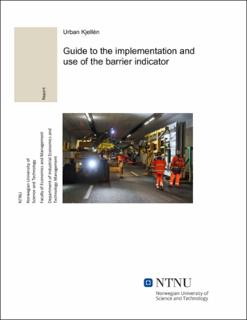Guide to the implementation and use of the barrier indicator
| dc.contributor.author | Kjellén, Urban Anders Gunnar | |
| dc.date.accessioned | 2021-10-28T11:11:35Z | |
| dc.date.available | 2021-10-28T11:11:35Z | |
| dc.date.created | 2021-08-20T11:28:58Z | |
| dc.date.issued | 2021 | |
| dc.identifier.uri | https://hdl.handle.net/11250/2826272 | |
| dc.description.abstract | The guide describes how to use the «barrier indicator» in construction projects. The indicator measures the availability of barriers in safety-critical construction activities and the results are presented as a percentage of full availability. Safety-critical activities are characterized by the fact that they involve the handling of large amounts of energy with the potential to disable or kill people. The use of the indicator provides site management and the HSE organization with the necessary information to manage the risk of severe harm in production. The guide presents the procedure for establishing and using the barrier indicator. It also introduces the underlying theory. A set of checklists that constitute a vital tool in the use of the barrier indicator can be found in the appendix. The checklists and the underlying method for barrier analysis also have other uses within the HSE discipline such as accident investigations and risk analyses. They provide important elements in the management of barriers against severe accidental harm through the phases of a project’s life cycle | en_US |
| dc.language.iso | eng | en_US |
| dc.publisher | NTNU | en_US |
| dc.title | Guide to the implementation and use of the barrier indicator | en_US |
| dc.type | Research report | en_US |
| dc.description.version | publishedVersion | en_US |
| dc.source.pagenumber | 65 | en_US |
| dc.identifier.cristin | 1927612 | |
| cristin.ispublished | true | |
| cristin.fulltext | original |
